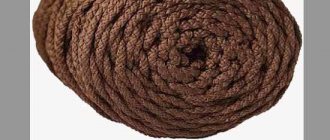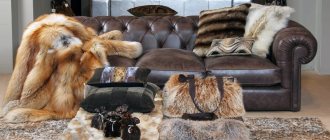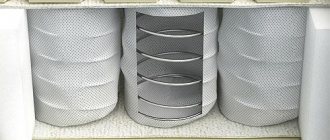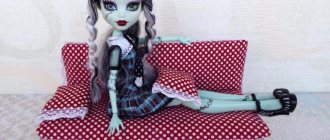Have you decided to crochet a blanket, but don't know where to start? Take a look at our selection, maybe you will find something interesting for yourself or for your baby.
Which method of knitting a bedspread should you choose?
There are several different knitting methods:
- in one piece;
- from square motifs;
- from triangular motifs;
- stripes and zigzags;
- from the center, etc.
We knit with a single fabric - this is the longest and most difficult method in our opinion. An adult blanket is knitted in a large size, for example 1.5 * 2 m, or even more. At first it will be easy for you to move from place to place with this knitting, but the larger it gets, the more difficult it will be to take your work with you on the road. What if you need to knit from different balls? In addition to the product, you will also have to carry a large supply of threads. So knitting in a single piece is acceptable if you do not plan to knit outside the home.
How much easier it is to knit with motifs. Typically, the motif for a bedspread does not exceed 10-20 cm in length/width. It is convenient to take this work with you and knit it on the road, in a clinic, on the subway, while waiting for a child to return from the section and on a walk. But the motto of a knitter is to knit every free minute of time. In addition, you can use leftovers from different glomeruli.
The advantages of knitting from motifs are obvious. Although there are a couple of small but significant disadvantages - the threads will have to be constantly cut off and ultimately the motifs will have to be sewn into a single fabric.
As you can see, there is no perfect method for knitting a blanket.
Look for the patterns you like, buy threads for them and knit the biggest and most beautiful blanket. It will decorate your home, and for you it will become a symbol of labor and patience, because not everyone is able to crochet such a large thing - a bedspread!
Crochet bedspread ideas from our website
Knitted patterns from our readers, choose suitable patterns for yourself.
Crochet bedspread and chair cover
The bedspread and cover on the chair are the work of Olga (Olyushka). Bedspread Knitted from leftover threads (cotton, thin wool, loose old things, etc.). I can’t say the yarn consumption specifically based on the colors; you need quite a lot of it.
Crocheted bedspread from Poltava. Sirloin technique
Bedspread "Poltava". Size 320*280cm. The yarn used was “Maxi” 100% cotton, produced in Turkey. It took about 7 kg for the bedspread. yarn. Hook No. 1.25. Work by Elena Pavlenko.
The bedspread is crocheted using the fillet technique. Basically a popcorn pattern, the pattern is shown in diagram #3. First, squares are knitted according to pattern No. 1, then we connect them together according to pattern No. 4. We knit the frill according to pattern No. 2.
Crochet patterns for bedspreads
Crochet Motif Blanket
I knitted a blanket from square motifs measuring 9 x 9 cm. It is easy to knit and the pattern is simple. Mercerized cotton for machine knitting in 3 threads. Hook 1.0. Weight about 2 kg. You can choose the color and size as you wish.
Crocheted blanket from Nadezhda Lavrova
Dear needlewomen! I am happy to present my greatest work, PLAD, for your approval. This miracle took about 3 months: October, November and December 2020. On December 31, I finished the last row in this project.
How to crochet a striped blanket
Baby blanket in 6 days. I accidentally found a group on Facebook that brings together needlewomen from all over the world who love this bedspread. I decided to knit. The yarn I used was still Soviet-made, wool blend. There is no diagram, there is only a description in English
Crochet bedspread using Bargello technique
Hello, I decided to show you a new work - a bedspread. Knitted from wool of different colors, mostly leftovers that each one has. BARGELLO technique, double-sided knitting and quite thick, as it consists of two layers. Combining with flowers
We knit a blanket with Tunisian crochet
Hello again everyone! I want to show off my new bedspread. I liked crocheting them, especially with Tunisian crochet. Hook number 4, thread Alize Cotton Gold (cotton and acrylic 100 g. 100 m.). It took a little less than 9 balls of thread,
How to crochet a wool blanket
Woolen (100% wool) blue and white blanket, crocheted from Snowflake motifs. Will decorate the interior and warm you on cold winter evenings. The size of the blanket is for a double bed. For a description and diagrams for the blanket, see the link
Bedspread made from granny squares
This blanket is knitted from “Beaded” threads, 100% acrylic, 480 meters. The blanket took 2 kg of yarn. Knitted with granny squares, total 35 squares (7*5). Granny square diagram:
Bedspread made from granny square motifs - Irina’s work
Bedspread made from granny squares. Blanket size: 130*180 cm. I knitted what is called “from what I had.” I had collected threads in the house since time immemorial - I decided to turn the balls into a useful product. The basis of knitting is a granny square, starting from the third row it is knitted
Crocheted and knitted blankets. DIY blankets
Greetings to everyone who has visited my blog Home-ideas.ru. It is difficult to imagine a modern living room interior without a beautiful blanket. Just like decorative pillows, it has a special role in apartment design. A bright blanket complements the color palette of the room and helps create the necessary accents; a soft and fluffy throw on an armchair or sofa gives the home an atmosphere of warmth and comfort.
Recently, plaid has become increasingly common in designer bedroom interiors as an additional element of bed decor. Spread across the bedspread, it complements the textile ensemble of various materials, shapes and textures. I wrote about creating such compositions in the topic: “Stylish bed decoration: how to create beauty in the bedroom.”
Do-it-yourself crocheted and knitted blankets give a special charm and uniqueness to the interior. Such needlework takes quite a lot of time, but does not require special skills, as when knitting clothes. Of course, it all depends on the complexity of the idea, although even the simplest blankets can look luxurious if they are made from beautiful yarn. Today we will look at photographs of such blankets, I hope they will inspire you to create your own masterpieces.
Before you start knitting a blanket for your living room or bedroom, you need to carefully consider its future color and choose the right thread texture. A stylish blanket, created to decorate the interior, must be a bright and eye-catching piece of decor, otherwise you will simply waste your time. It will be very disappointing if the homemade product, on which so many evenings were spent, does not match the color scheme of the room or dissolves against the background of the furniture and walls. We should not forget about the psychological impact of color on a person. Shades close to red, yellow and brown are considered warm; a blanket with a predominance of these tones will make the room more comfortable. Blue and light blue, on the contrary, will bring coolness - these colors will be good in the summer.
The structure of the yarn and its composition also play a big role. Wool, mohair and their fluffy acrylic substitutes are useful for creating warm winter blankets. Well, silk, cotton, viscose and acetate threads are suitable for light summer capes.
For those who are not very confident in knitting and crocheting, it is better to choose fluffy, fleecy or textured threads (such as bouclé). Knit the fabric with regular garter stitch and enjoy an excellent result - the yarn will do all the beauty for you. A good example of such a blanket is in the photo below.
Beautiful stylish blankets are made from thick yarn. Especially if they are made in loose knitting with dropped loops or consist of large crocheted motifs. Another plus is that creating such capes is quite quick.
Blankets knitted from multi-colored yarn look luxurious. Here, one palette with halftones, or a beautiful combination of shades of colors from the classic triad can be taken as a basis.
As for the execution technique, there is, of course, no big difference in how the blanket will be knitted - crocheted or knitted. It all depends on your skills and preferences. Both methods allow you to make beautiful, stylish things.
A knitted blanket trimmed with fringe, tassels or other decorations looks homely and cozy. Here are some photos with examples of this type of edge design.
A multi-colored blanket made from expensive yarn, skillfully knitted with complex knitting is a creative masterpiece that does not require additional decorations. Such a product is the pride of the needlewoman and the subject of admiration for guests and family.
Today we talked about how to knit a beautiful blanket for interior decoration with your own hands and looked at a selection of photographs. I hope this material was interesting for you and inspired creativity!
home-ideas.ru
How to crochet a baby blanket
Not only adults, but also our children need a bedspread. Several models from our readers.
Crochet blanket for newborn
Blanket for a newborn's discharge from the hospital! Beautiful, comfortable and practical thing! Knitted from 100% cotton BEGONIA, crochet number 2. The base of the blanket is a “granny square”. Colored inserts can be placed at your discretion! As a decoration I used a satin ribbon and
Crochet baby blanket
To knit a baby blanket you will need: 300 g of white-lilac-green melange acrylic yarn, 100 g of white yarn and 4 m of satin ribbon 2 cm wide. Hook No. 3.5. Lush stitch, embossed (lush stitch, relief): *grab the thread, insert
Knitted blanket with waffle pattern
My granddaughter was born, and I decided to knit a blanket for her as a gift. Here's what I got. I looked for the drawing on the Internet. And I liked this one. The waffle pattern blanket is knitted from very soft and fluffy yarn.
Baby blanket Rainbow, crocheted
Children's blanket "Rainbow". The work requires pens, yarn and a hook. Blanket size 90cmx105cm. Crocheted No. 3. It took 4+2+3 =7 skeins (green, yellow, orange) Jeans YarnArt yarn used 55% cotton, 45% polyacrylic + white Baby used
DIY knitted blanket | ServiceYard - the comfort of your home is in your hands.
Blankets are designed to give warmth, create coziness and add zest to the design of a bedroom or guest room. Such a thing will be a unique interior decoration and will also save your money. Making a knitted blanket with your own hands, if you have ever knitted things, will not be difficult for you. Below are step-by-step instructions, following which you will make a masterpiece that will transform the interior and add many pleasant sensations to you during use.
Selecting a design
To make a bedspread with your own hands, you will need a lot of time and some skills. Everything, of course, depends on the complexity of your idea, and even the simplest blankets can be beautiful if they are made from luxurious yarn. First, think about what color will suit your bedroom or living room design best, choose the texture of the thread.
Pay attention to the influence of color on a person’s psychological state:
- Warm shades are considered red, brown, yellow and those close to them. Using this color scheme, you will make the room more comfortable.
- The use of blue, green, light blue colors will bring coolness.
Materials we will need:
- Knitting threads about 1200 grams.
- Circular knitting needles No. 7.
- Centimeter tape.
- Scissors.
Important! Before you start knitting, knit a control sample. Read the recommendations before choosing yarn and needle numbers.
Sequencing:
- We knit a control sample. It must be at least 33 stitches wide and 40 rows high. After that, calculate the knitting density (number of rows and loops per 10 cm).
- Cast on 144 stitches and knit with the basic pattern:
- 1st row - knit 2 knit stitches, 2 purl stitches - repeat.
- 2nd row - knit according to the pattern.
- Row 3 - purl 2, knit 2 - repeat.
- Row 4 - knit stitches according to the pattern.
- Then simply repeat rows 1-4.
- Close the loops at a height of 160 cm.
- Place the finished product on a flat surface.
- Moisten from below and let dry completely.
- Decorate the edges of the blanket with fringe. To do this, you need to cut threads about 45 cm long and connect three threads together. Fold it in half and tie it over the edge of the blanket.
Important! When creating a knitted blanket with your own hands, you do not have to follow just one pattern. You can easily complement it, choose different shades of threads and turn everything you have planned into reality, without limiting yourself in anything.
Plaid with braids
A plaid knitted with braids looks very beautiful. The knitting pattern is very simple.
You will need:
- Yarn.
- Knitting needles.
- Auxiliary knitting needle.
- Centimeter.
- Scissors.
Procedure:
- Cast on the required number of loops, keeping in mind that the pattern requires 6 knit stitches for the braid and 6 purl loops for the gaps between the braids.
- From rows 1 to 4, knit 6 knit stitches, 6 purl stitches, etc.
- Row 5 - make a braid.
- Repeat with rows 1-4.
- Having knitted the length you need, close the loops.
Important! You can use any braiding technique. You can easily find the diagrams on the Internet.
Giant knitted blanket
A very interesting idea is to create a giant blanket with your own hands; it can be used as a rug or blanket. Also, by choosing hypoallergenic materials, you can knit a blanket into a crib.
Required materials:
- Giant knitting needles with a diameter of about three centimeters.
- Merino yarn.
Important! For a finished product measuring 70 by 100 cm you will need approximately 1.5 kg of yarn.
Knitting a voluminous blanket is very simple - using stockinette stitch. To complete your work of art you will need only 2-3 hours of your time.
A hand knitted blanket is truly, very beautiful. There are also a large number of bedspreads made from other materials that also look very original. Below we will look at other interesting methods with which you can create an original blanket with your own hands.
Fleece blanket
A bright and soft fleece blanket is very easy to make.
Necessary materials:
- White and black fleece.
- Needles.
- Scissors.
- Threads.
- White and black yarn.
- Tape measure.
Important! You can choose the color of fleece and yarn at your discretion.
Sequencing:
- From the black fleece (base), cut out the shape and size of your blanket.
- Cut 30cm x 30cm squares from black and white fleece.
- Sew them together in a checkerboard pattern.
- Iron the sewn product and let it cool.
- Sew the previously sewn squares to the base.
Important! Sew black squares with white threads, and white ones with black threads.
Your fleece blanket is ready!
Sweater blanket
An unusual solution at first glance, but it will help you get rid of unnecessary things and create comfort and warmth.
You will need:
- Unnecessary sweaters.
- Knitting.
- Needle.
- Scissors.
- Sewing machine.
- Lining.
Progress:
- Cut up the sweaters, cut off anything unnecessary.
- Cut the flaps into rectangles or squares of different sizes.
- Place them together and create the shape of the future blanket.
- Sew all parts with a sewing machine.
- Sew the lining to the stitched shape using crochet thread, using a decorative stitch.
The product is ready - enjoy!
Video material
As it turned out, knitting a blanket with your own hands or making it from other materials is not so difficult. All you need is a little patience and time. The end result will be your pride and the admiration of your family and guests.
Crochet bedspread video - tutorials
There are many different techniques for knitting bedspreads, but not all are presented on our website. Therefore, we have several video master classes, we hope you like them.
Bavarian knitting, crochet pattern for bedspread
An original knitting technique that allows you to get an interesting “waffle” texture of the fabric.
The video should load here, please wait or refresh the page.
Crochet bedspread made from motifs
In this video, the author will tell you in detail how to knit a motif for a blanket, how to combine the motifs into a single fabric.
To knit a blanket we will need:
- simple and cheap yarn of different colors;
- hook number 3;
- desire to knit!
You can also use the motifs to knit a light blanket, seats for stools and much more.
The video should load here, please wait or refresh the page.
How to crochet a blanket using the granny square pattern
With this pattern you can crochet a large blanket or a children's blanket, as well as pillowcases, bedspreads, shawls and blouses.
For knitting you will need threads of two colors (100g/250m) and hook number 3.
The video should load here, please wait or refresh the page.
Master class on crocheting a square bedspread for a sofa
I knitted a swatch using yarn I found at home. But she's a little rude. For the bedspread, I advise you to take thinner yarn, which contains acrylic. For example, Turkish Alize, then yarn consumption will be more economical. According to my calculations, you may need about 2.5 kg of yarn approximately, maybe a little less or a little more.
The video should load here, please wait or refresh the page.
Crochet bedspread “Sunflowers”
How to crochet a motif with sunflowers in a beautiful blanket. For a blanket, I recommend using good yarn that contains acrylic, for example, Turkish Alize. The source magazine indicates yarn 100 g/370 m. Yarn consumption in the same source is indicated as follows: 6 skeins of brown, 4 - green, 3 - yellow, 2 - light yellow (I have white) and 3 more skeins of harvust color, With the last one, I didn’t really understand what color it was. In total it comes out to 1800 grams.
The video should load here, please wait or refresh the page.
Knitted bedspreads add sophistication to the interior and provide warmth in cool weather. By showing your imagination, you can create your own unique bedspread. Knitted by hand, such things not only become decorations for the home, but also create coziness, preserving the warmth of the hands that created them. You can crochet a blanket with the patterns and descriptions from this article in different sizes and different levels of difficulty.
Video tutorial on weaving a blanket from pompoms
Products made from high-quality, soft yarn look very cozy, warm, and you just want to press your cheek to them. The step-by-step video below will teach you how to make your own fluffy pompom blanket. Such a blanket can be intended for a baby, which will be a wonderful gift from a grandmother, mother, or aunt. A child wrapped in this blanket will feel very cozy. The blanket can be used as a cover on stools, armchairs, sofas, children's and adult beds, or as a rug.
Find out how to create and a detailed description in the photo and video tutorials.
A DIY knitted blanket is undoubtedly very good. But, in addition to these types, there are also many others, consisting of original and unusual materials.
Knitted blanket from motifs for the sofa
Dimensions: 128cm by 160cm.
- yarn containing 96% cotton, 4% polyester, 50g per 105m, smoky color – 800g;
- the same, blue – 700g;
- hook No.4.
- rosette: make a ring from blue yarn and crochet it in the round according to the image of the diagram. We begin each row of VP and complete 1 SS. You need to link it once with 1p. 7 rubles each, observing the alternation of colors: – 1 rub. Blue Ave; – 2 rows of smoky, blue, smoky etc.;
- circle: we make a ring from smoky thread and crochet sc into it in the round. We start each row with an additional VP and complete 1 SS in the 1st RLS circle. row: 1st row: 8 sc; 2p.: blue ave.: double the number of sts. We get 16 sts; 3 p.: smoky ave.: from every 2nd p. knit 2 p. Total 24 p.; 4p.: blue ave.: from each 3p. knit 2 p. Total 32p.; 5p.: smoky ave.: from each 4p. knit 2 p. Only 40p.
Density: with the “Rosette” pattern, the full motif is Ø16cm; with the “Circle” pattern, the full motif is Ø6cm.
We sew the simplest blanket
For those who prefer sewing to knitting, there are also many ways and tips on how to sew an interesting and original cape.
Take any fabric you like and, having decided on the size of the future blanket, simply trim the edges. Fringe or ruffles will be a wonderful decoration. And from many multi-colored scraps you will get a luxurious patchwork-style bedspread. Sew them together to create a unique pattern, or create a whole picture - in any case, such work will bring a lot of pleasure.
Openwork knitted blanket for an armchair
Dimensions: 106cm by 136cm.
- yarn, 100% cotton, 50g per 90m, pink, light green, white - 300g each;
- the same, crimson, purple, gray, yellow-green and green colors - 200g each;
- hook No.5.
- main motive: crochet the original chain of 6 VPs, connect it with a connection. St into the ring and then knit according to the pattern.
The first half-pillar circle. R. replace 2 VP. We start each row with an additional 1 air. P.
We complete each r. 1 connection dc in the starting point.
baby blanket
Size: 71cm by 71cm.
- yarn, 100% acrylic, medium thickness, blue color – 130g;
- the same, pink – 150g;
- hook No.4.
- main motive: crochet according to diagram 1;
- binding: crochet according to diagram 2.
Density: one motif is 8.5 cm by 8.5 cm.
Description
The children's blanket consists of 25 motifs, knitted with alternating yarn colors: 1p. and 2p. blue thread, 3p. and 4r. – pink and 24 motifs with reverse alternation (see photo).
We start each motif with a ring and knit according to the pattern. We close the row of connections. stlb and knit 3 VP lifting.
We sew the baby blanket, observing the checkerboard order.
We make the binding according to diagram 2, at the corners we knit 3 Sts, 2 VP, 3 Sts from each stitch. Sequence of colors: 2 r. pink, 2 r. blue, 2 r. pink.
Moisten the finished knitted blanket and dry it on a horizontal surface, fixing it to the required size.
An easy way to sew a patchwork blanket
Sewing a patchwork bedspread is not a difficult, although rather lengthy process. You will find all the necessary materials for it at hand: old pillowcases, curtains, clothes
How to sew a bedspread from scraps with your own hands? Here are the step-by-step instructions:
- Decide on the dominant shade of the fabric, and then choose colors that go well with it.
- Using a cardboard template, a ruler and scissors, cut the required number of squares into strips. Traditionally, their size is 15*15 cm. In this case, about 1 cm on each side of the square will go to the seams.
- Alternating different patterns and colors of fabrics, sew all the scraps together. This will be the front side of the patchwork bedspread.
- Using a hot iron, press the inside free edges of the squares;
- For the reverse side of the bedspread, you can use a sheet, a solid piece of fabric, or shreds.
At your discretion, you can leave the seams outside and “dishevel” them a little, and also decorate the patchwork bedspread with additional stitching, as in the next photo.
By the way, there is another interesting way to make a patchwork bedspread with your own hands - from crocheted scraps. Step-by-step instructions and examples of finished work are below in the photo:
Bedspread for a sofa made of squares
Dimensions: 148cm by 116cm.
- yarn No1, containing 50% wool, 50% polyacrylic, 50g per 80m, coffee color – 650g;
- the same, white – 250g;
- the same, emerald color – 200g;
- the same, brick color – 100g;
- yarn No2, containing 63% polyamide, 37% wool, 50g per 130m, white – 100g;
- the same, turquoise color – 100g;
- the same, carrot color – 50g;
- yarn No3, containing 70% polyacrylic, 20% wool, 10% polyamide, 50g per 100m, beige - 100g;
- the same, white – 50g;
- hook No.5.
- square: knit a chain of 8 VPs and connect it into a SS ring. Next, crochet according to the pattern in the round. We start every day. VP and complete 1 SS in the initial VP or 1 DC;
- circular grid: alternately 1 StS2N, 1 VP. We start each row with 4 VP instead of the 1st StS2H and complete 1 SS in the last initial VP.
We perform it once with 1 ruble. 6 rubles each, changing the color of the yarn. We fasten each new thread with 1 connection. stlb.
Alternating stripes 1: knit in the round 2p. yarn No. 1 coffee, 2p. yarn No. 3 beige, 2 p. yarn No.1 coffee color.
Alternating stripes 2: knit in the round, 2 p. yarn No1 emerald color, yarn No2 turquoise color, yarn No1 emerald color.
Alternating stripes No3: knit in the round, 2 p. Ave. No1 brick color, Ave. No2 carrot color, Ave. No1 brick color.
Alternating stripes No4: knit in the round, 2 p. white yarn No1, No2, and No3.
- a square is 16cm by 16cm;
- on a circular mesh 19p. for 5.5 rubles equal to 10 cm by 10 cm.
Description
We crochet 25 motifs in sequence 1; 9 motives – in sequence 2; 6 motives – in sequence 3; 8 motives – in sequence 4.
Assembly
We lay out the finished squares, guided by the pattern (6 pieces x 8 pieces). On the front side, we first connect horizontal stripes, and then vertical stripes using coffee yarn No. 1.
We start tying with coffee yarn No.1. We make 2 rows, switching to white color of the same yarn. We knit 2 r.
Then - 1 rub. circular mesh with coffee yarn No.1. At the same time, on the corners, in the first river. on both sides of the central StS2N we knit 2 VPs and each trace. circle. R. do 1 VP more. In the final circle. R. knit 3 StS2N in corner stitch.
The last stage of untying: 1 circle.r. waves: *1 sc, 1 sc, 3 sc2n, 1 sc*. We repeat from * to *. We complete 1 SS in the 1st SC.
Rules for knitting a blanket and bedspread for a sofa with detailed explanations
Many people, when choosing interior items, give preference to high-quality, expensive things, so they try to protect them from rapid wear and tear. For sofas, various bedspreads and rugs are used for these purposes. These products perform many critical tasks. These include protecting high-quality upholstery from contamination and abrasion.
It is protected from possible mechanical impact by various cutting or piercing objects. Bedspreads are attractive and unusual, therefore they bring novelty to the interior, and often act as its highlight. If you wish and have the opportunity, knitting blankets and bedspreads for the sofa is a simple and very exciting task.
Moreover, this process can be performed either with crochet or knitting.
Dimensions and shape
Making your own item is not difficult, but it is important to decide in advance on its shape and dimensions. The shape usually fully matches the configuration of the sofa itself. This is especially true if you create a soft-looking blanket or a blanket for a corner sofa with your own hands, since a standard quadrangle will not be suitable for such furniture.
Dimensions are selected in accordance with the dimensions of the existing furniture. The bedspread should be a little larger as it hides all the important elements of the sofa and also hangs down a little. Therefore, before creating or purchasing a product, it is important to carefully measure the existing piece of furniture.
For a small sofa, a blanket with dimensions of 140x200 cm is sufficient, and for a large sofa it is advisable to choose a Euro cover, the dimensions of which often reach even 270x270 cm.
SquareRoundIrregularShapedRectangular
Knitting needles
Most often, knitting needles are chosen for knitting these products. With their help you can quickly make a blanket for the sofa. There are many schemes that ensure the creation of truly beautiful and unique patterns. Even when using simple and standard posts, the formation of an interesting product is guaranteed.
Knit several strips in different patterns. Sew the stripes. Ready plaid.
How to sew a bedspread for a corner sofa or standard furniture? To do this, it is important to have some experience in working with knitting needles.
Otherwise, it will be difficult to get a truly high-quality result. The sequential master class is presented in the form of a video, so if you strictly follow the instructions and successive steps, then no difficulties will arise.
In the process of work, the advice of experts is taken into account:
- to quickly complete the work, it is recommended to choose large yarn;
- knitting needles are correctly selected for the selected material;
- if the process is performed by a person who has not used knitting needles for a long time, then it is advisable to practice beforehand in order to avoid mistakes in the process of creating the product;
- if simple and understandable patterns are chosen, then it is extremely important that the knitting is neat, otherwise all the flaws will be clearly visible on the bedspread;
- If you end up with a loop that differs in size or appearance from other elements in the product, then it must be remade, otherwise it will be clearly visible in the final result.
If you figure out how to knit a blanket or blanket with knitting needles, then this process will be fun and fast, and at the same time the owner of the sofa will receive a unique and unique product. A self-made product cannot be purchased in a store, and it fully meets the needs of the owner of the premises.
Crochet
Another way of knitting is the crocheting process. With its help, truly unusual, unique patterns are obtained, so the formed blankets and bedspreads are real works of art.
Crocheting is considered more difficult than knitting. With its help, a huge number of different patterns and patterns are reproduced, and photos of them can be seen in the selection. Ideal products made using crochet hooks for rooms designed in Provence or country style.
The work is considered lengthy, so most often this tool is chosen when you need to make a small-sized blanket. Any chosen pattern can be easily created with different threads. The thickness of the yarn determines how dense and thick the final product will be. The choice of a specific pattern depends entirely on the skills and experience of the person involved in knitting.
If a complete sofa cover is being created, then several individual elements are knitted, and by sewing them together it is possible to obtain a beautiful, universal product that has no analogues on the market.
Methods of use in the interior
Blankets and bedspreads, knitted with your own hands, are unusual elements in any room. They give the interior coziness and warmth, and the person himself will be pleased to be at home.
These elements can be used not only as a protective element for the sofa, but also for other purposes.
A high-quality, warm woolen blanket will be a real gift on a winter evening, because, covering yourself with it on the sofa with a cup of hot tea, everyone will enjoy the comfort and warmth.
In the interior, these elements can be used as a tablecloth on a coffee table or even as curtains for the bedroom, characterized by increased density, uniqueness, and sophistication.
Many women who prefer to decorate their home with handmade items knit blankets for chairs and beds.
They usually know how to knit, cut, sew, so they get unique products that combine various unusual techniques.
Thus, a throw or a modern throw is considered the ideal solution for any sofa. These products are easy to make with your own hands, but it is important to decide in advance on their dimensions, colors, and shape. In this case, it is guaranteed that you can decorate any room with unusual, bright elements that add sophistication and comfort to the interior.
Source: https://krovati-i-divany.ru/samostoyatelno/73-vjazanie-pledov-i-pokryval-na-divan.html
Baby blanket made of melange yarn
Dimensions: 80cm by 80cm.
- yarn, 100% acrylic, melange – 300g;
- white yarn – 100g;
- satin ribbon 2cm – 4m wide;
- hook No. 3.5.
- We perform the fantasy pattern according to diagram 1;
- We make the lace border according to diagram 2.
- lush stem, relief: *grab the thread, insert the hook, circle the next one. p. by persons. side on the wrong side, grab the thread and pull out the loop* - repeat from * to * four times, inserting the hook into the same loop. As a result, there are 11 stitches on the hook. Then we grab the thread, pull it through all the sts on the hook, 1 ch;
- popcorn: knit 5 dc from 1 st. Remove the working loop from the hook and insert the hook along the front side under the top of the 1st DC. We lift the removed stitch and knit it.
Density: 29p. equal to 10cm.
Description
We cast on a chain of 233 VPs with melange yarn and continue working according to the pattern. At the level of 80cm we complete the work.
Harness
We knit with white yarn:
- 1p.: RLS, in the corners - from 1p. 3 sc each. We close the river;
- 2p.: 5 VP lifting, StS3N, * 2 VP, skip 2p. previous row, 2 StS3N* – repeat from * to *. In the corners of each of the 3 sc before. R. knit 2 VP, 3 StS3N. We close the river;
- 3r., 4r., 5r., 6r.: knit according to the lace border pattern.
Assembly
Moisten the finished bedspread and dry it on a horizontal surface, fixing it to the required dimensions. Thread a satin ribbon and tie a bow.
Knitting a blanket for a sofa
In the description of crocheting a bedspread for a sofa, we will determine the amount of yarn, look at the knitting pattern in detail, and find out how to stitch the motifs.
How much yarn do you need?
Very often, and quite rightly, the question arises of how much and what kind of yarn is needed.
Well, let's count. It’s not for nothing that I connected the motive; we’ll use it to determine it.
For a knitted blanket, it is best to use acrylic.
I took Circassian (or Kislovodsk also called) yarn, the composition is acrylic + a little wool mixture. The thread is thick, I don’t know how long it is in a skein, I think that 50 grams is no more than 100 meters.
I had a hook number 1.5.
The square motif of the bedspread made from this yarn turned out to be quite large - with a side of 27 cm, in contrast to the bright blanket made of squares, which I talked about earlier.
It took almost two skeins of yarn, about 80 grams.
If we need to knit 8 motifs in length, and 4 in width, therefore, a total of 32.
32 motifs x 80 grams = 2560 grams.
You also need some yarn for the border, approximately this calculation: 8 motifs x 40 grams = 320 grams.
2560 + 320 = 2880 /2 = 1440 grams.
Those. As a result, we get that the blanket will require 1440 grams of yarn in two colors.
Accordingly, if the yarn is thinner, which is preferable, then its consumption will be less.
Knitting a square
The pattern for crocheting the squares that make up the sofa bedspread is in front of you.
For greater clarity, I’m also posting the center knitting pattern separately.
I'll tell you about the features of knitting.
- So, we begin to knit a square with a ring of 4-6 air loops.
- In the first row there are 8 petals made of two stitches with one crochet and three VPs between them. (At the beginning of the row, as always, instead of a stitch, we knit 3VP).
- In the second row, in each arch we knit 10 unfinished stitches with three crochets, knitted together (in the diagram this is shown in the form of a barrel). There are 4 or 8 VPs between them. We finish the row like this: 2VP and 1SC in the air loops of the beginning of the row.
- We start the third row with a group of 5 unfinished C1Hs knitted together. Next, 1VP and 13 C1H over the arch of 8VP. Above the arches of 4 loops are two groups of 5 unfinished C1H, knitted together, and 4VP between them. At the end of the row there are 5 unfinished double crochet stitches, 2VP, 1SC to the beginning of the row. The corners of the future square have already been determined, in which in all subsequent rows we knit the same pattern from two groups of unfinished columns.
- We move on to reading the large pattern and knitting large petals on four sides. In rows 4 to 11, you need to knit convex and concave single crochet stitches over the posts of the previous row on the sides of the square, as evidenced by the designations with “hooks” at the ends. Thanks to this knitting, beautiful embossed “petals” are obtained. Between the petals there is a mesh of double crochet stitches and two VPs between them. The number of cells increases with each row.
- We tie the finished square around the perimeter with single crochets.
Video tutorial on knitting motif:
In total you will need to knit 16 squares of one color and 16 of another.
Knitting a triangular border motif
Start knitting again with a ring.
Then we knit in the first row 3VP, 2VP, 1C1H, 2VP, 5 unfinished double crochet stitches knitted together, 4VP, 5 unfinished double crochet stitches knitted together, 2VP, 1C1H, 2VP, 1C1H.
We turn the knitting and knit all the following rows with rotary rows. In the center there will be a braid of groups of unfinished columns, and on the sides of it there will be a mesh of C1H and 2 VP between them. The expansion of the triangle will occur due to increases at the beginning and end of each row.
We knit in this way until the side of the base of the triangle is equal to the side of the square motif. The last row is tying with single crochets.
I didn’t bother knitting the entire motif, it was of no use to me, it was only important to understand the principle of knitting and make a description of it for you.
Video tutorial on knitting borders:
In total you will need to knit 4 triangles of each color.
How to crochet bedspread motifs
The figure shows that all the motifs of the bedspread, both square and triangular, are additionally tied with yarn of the same color and connected to each other with it.
With this method of joining, the motifs are folded together in pairs with the wrong side inward and crocheted with single crochets, capturing both walls of the loops.
The result was a beautiful seam along the front side with a rib.
Honestly, I don't really like how the yellow squares are connected with green yarn. I would do this: I would connect motifs of the same color with the same yarn, and different colors - any, but from the inside out.
In this case, we fold the motifs facing inward and connect them with half-columns (connecting ones) on both walls of the loop. The seam will be almost invisible.
Step-by-step instructions and diagrams for creating a pompom blanket
Needlewomen who have experience in creating things with their own hands teach in numerous master classes and video lessons the art of making a square or rectangular blanket from pompoms, guided by a variety of techniques. The main material is yarn, which must be selected with special care, especially if the product is intended for a child: the blanket should be pleasant and soft, since it will come into contact with the delicate skin of children. You can make this thing in several ways:
- Knit with knitting needles from yarn with acrylic in a composition that consists of sections of threads and pom-poms evenly spaced between them.
- Using a special frame, weave yarn in at least two colors. In most cases, wool blend, acrylic thread, and baby yarn are used for children's clothes.
We weave a baby blanket for a newborn
Any woman can weave a blanket from pompoms with her own hands. Young mothers prefer to make this product for newborns using yarn in delicate shades of pink and blue. A soft envelope with borders made of satin ribbons, a blanket for a baby's cradle, crib, looks very impressive and interesting. Step by step instructions:
- Prepare the frame, start winding the threads in rows horizontally and vertically, alternating. First, the tip is tied to the top nail, lowered down, where it covers two nails, rises, and covers another pair of nails from above. So the thread runs along the entire vertical part. Next, you need to turn the thread to the horizontal side and walk to the end in a similar way. You should start with threads that contrast with the main shade of the product. This will be the basis.
- The next step is to wind threads of a different color with your hands, which will make up the pompoms themselves. After this, the process of creating the base is completed.
- Next comes the most painstaking, time-consuming part of the work - tying all the intersections with reliable strong knots to prevent unraveling. Once you have done this, carefully inspect the weave to make sure nothing is missed.
- To form the pom-poms, which form the main highlight of the product, you need to cut the threads with scissors in the middle between the intersections. Cut the outer threads at the very end. The base layer that was wound first is not cut.
Master class on making a blanket on a frame
If you knit a large blanket, you can use it as a cover for sofas and armchairs. Following the master class below, you can create pillowcases, rugs, scarves, and other interior items that will decorate your home. To make a frame, ask a man for help. This tool must be strong so that it does not break at the most inopportune moment.
The dimensions of the frame will determine the size of the future product. However, after removal, the bedspread shrinks a little (by 5-10 cm). There are several options for the frame: made on the basis of plywood or planks. It is more convenient to use the second option when knitting, but the first is more durable. If you require an instrument over a meter in size, consider strengthening it as it will be subject to significant pulling forces. When the frame is made, drive in nails at equal distances from each other (about 3-5 cm). Product manufacturing instructions:
- Having tied the thread to the outermost nail, we stretch it with a snake horizontally, vertically, alternating. The first color will make up the base of the product and the back side. You need to make 20 layers.
- We weave with the following color: we wind 60 layers of one or more shades. We tie the tip of the last thread to the nearest nail.
- We tie with our fingers all the places where the threads intersect, very tightly crosswise.
- We cut the threads in the middle between the intersections, leaving 20 lower layers of the warp.
- We make the edging in the form of a fringe.
We knit a blanket from yarn without a frame
If you have basic knitting skills, you can easily make a blanket with your own hands. For work, you may need acrylic thread with pompoms, the yardage of which depends on the desired size of the final product (400 g of yarn is required for a 75x75 cm bedspread). The step-by-step master class below will describe the technology for creating a blanket from knitted squares crocheted together. You will need 200 g of yarn with pompoms, 100 g of white yarn with cotton and viscose, knitting needles, a hook, and a satin ribbon. Use step-by-step instructions:
- We cast on 14 loops. For the first row, we make a loop between the pom-poms and put it on a knitting needle.
- We knit one row with knit stitches, the next row with purl stitches, we knit the edge stitches like the rest.
- Continue knitting until square. Close the loops: knit the first knit stitch.
- Replace the right knitting needle with a crochet hook. In the knitted first loop, crochet another one with a working warp thread.
- We knit the third with a loop that is on the knitting needle. We continue to alternate: one from the working needle, the other from the knitting needle.
- We get a square.
- We tie each square with white: between the pom-poms we knit two double crochets from one loop into a loop, and between them there are 3 double crochets.
- We tie the first square in a circle, and from the second we attach the parts to each other through the middle loop of the arch, which is made up of air loops.
- We connect all the parts of the product in this way.
- We tie the blanket in a circle with one row of double crochets, with 3 double crochets between them. We knit the next row with 4 crochets.
- We thread the tape along the edge, distributing it evenly. At one corner we tie the ribbon with a beautiful bow.











